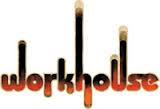|
ADAM NELSON CEO OF WORKHOUSE IS AN ART PIMP | WWW.WORKHOUSEPR.COM
“In a world of con men there is nothing lower than a publicist,” The New Yorker wrote in 1944, harkening back to the days when the Fourth Estate was populated by flacks and hacks. But the more things change, the more they remain the same, particularly now, when the artist as brand has been unwittingly elevated to the international stage. Adam Nelson, Founder of WORKHOUSE, an arts-based publicity firm operating in New York City that was instituted in 1999. Workhouse has represented photographers David LaChapelle, Albert Watson, Roxanne Lowitt, Nigel Parry, Pamela Hanson, David Drebin, Oberto Gili, Billy Name, Bob Gruen, Jean Paul Goude, Patrick McMullan, and the Horst P. Horst estate; galleries including Tony Shafrazi Gallery, Staley Wise Gallery, Photographers Limited Editions, Symbolic Gallery, and Rubin Museum of Art; and publishing houses Rizzoli, teNeues, Random House, Skira, Universe, and Assouline Editions to name a few. In each case, the agency was tasked with putting the fine art images or photographic books in the forefront of public consciousness. How is it done? The publicist’s trick is to make it appear effortless, as though waving a wand and—POOF—a New York Times feature magically materializes above the fold. But the hard truth is, publicity is a thankless job. In a world of what-have-you-done-for-me-lately, the publicist must continuously produce news and innovative results. Nelson reveals the tricks of the trade in his new book, Art Pimp: Tales of FlimFlam, Fixes, and Fornication, which has just launched on Kickstarter. The book is one part personal history, one part primer centered upon the art of the fix. It details the way in which publicists work to engineer iconography for the media and the public alike. As Nelson notes, “Art Pimp is a minimalist manifesto for the disenfranchised lay-offs among us. It preaches jailbreak. Read it and you’ll discover why desperation gets things done, why you should unsubscribe, friend your mentors, look for loopholes, cop an attitude and work for free. Let the uptown crowd stuff themselves into cubicles. This is a new playbook for modern age entrepreneurs who never want to have a boss again or give into the old Flim Flam. Traditional media is dying. So how do you get the goods across today when people aren’t buying? Learn how to be more industrious, how to establish brands with celebrity craftsmanship, and a slew of revolutionary concepts that will both rouse and rally you.” Nelson recounts his days with LaChapelle who created experiences that could only be described as “Warholesque.” Those brush strokes helped him understand the mechanics of spin, the power of illusion, and why millions continue to travel to the heart of New York City with absolute desperation to craft cultural moments of meaning. Nelson observes, “We bring a bit of attitude to the table. A brandalist to me is nothing more than a PR punk. Character’s such as Banksy who hit the wall with stencil art. There is a resonance to the way in which brandalist’s define themselves. Consider Richard Branson, Anthony Bourdain, Johnny Rotten. Each are serious thumb nosers who possess the spit and polish to get it done. Fire starters who feed off commitment with cold confidence. They are willing to bet the ranch and woe be he who stands in the way.” This is what sets a brandalist apart from an every day publicist. It’s the chartable difference between one who’s finely focused on achieving media placements for the clip books of yesterday, and the other who’s bricklaying towards the future in hopes of constructing a larger cultural mythology around their client. This is even more evident today, at a time where media transforms before our very eyes. Nelson likens this period to the time between radio and television when things were still in flux. “We don’t know where we sit. The splintering of media has greatly affected the ability to see our own names in newsprint. People have become more desperate with great hopes of being prominently placed. The idea of being ‘Newsworthy’ has rising to exponential heights. Here on the tipping point how many can cram into the phone booth or stand on the pin of the needle? The celebration of fame is so short lived today we must ask ourselves - is the mad, sad dash really worth it?” Art Pimp offers a reflective look at the way one mad hatter has created a vital relationship between the artist, the media, and the public. A tall tale told from a brandalist understands that the message is always traced back to the messenger. Today, in a time when media morphs before our very eyes, where we are all charged with the mission to self-create a public identity, Nelson’s declaration preaches jailbreak so that we can reinvent ourselves in our own image. This is what publicity does best—and why The New Yorker loathed it so much—is it a con? Is it a truth? Or is it, just maybe, a little bit of both? Miss Rosen LINKS http://www.artpimpbook.com http://www.workhousepr.com http://missrosen.wordpress.com CONTRIBUTORS Miss Rosen
0 Comments
Leave a Reply. |
WORKHOUSE
THE HOUSE THAT WORK BUILT. Archives
July 2024
|


 RSS Feed
RSS Feed